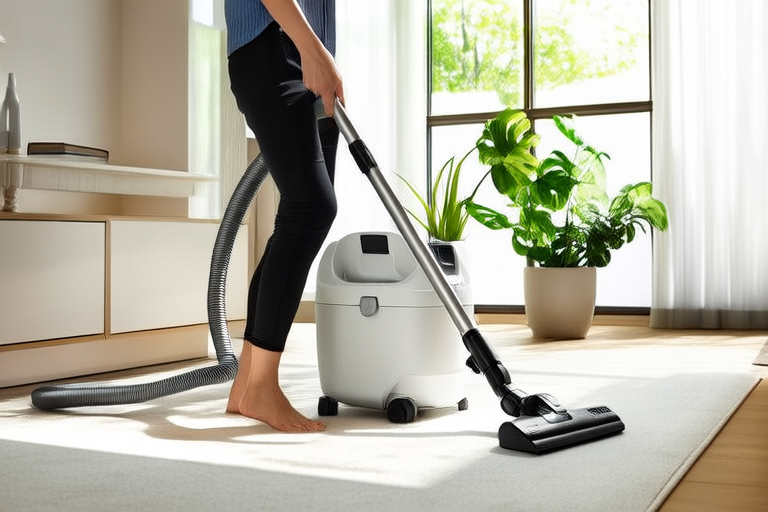How Regular Deep Cleaning Can Improve Indoor Air Quality for Better Health
Introduction
Indoor air quality (IAQ) is often overlooked, but it plays a critical role in our overall health and well-being. Many people spend up to 90% of their time indoors, making the quality of the air they breathe even more important. Poor IAQ can lead to a variety of health issues, including allergies, respiratory problems, and even long-term conditions like asthma. Regular deep cleaning is one of the most effective ways to improve indoor air quality, ensuring a healthier living environment for you and your family.
Understanding Indoor Air Pollution
Before we dive into the benefits of deep cleaning, it’s essential to understand what contributes to poor indoor air quality. Common pollutants include dust mites, pet dander, mold spores, volatile organic compounds (VOCs), and secondhand smoke. These pollutants can accumulate over time, especially in areas with limited ventilation. By regularly cleaning these contaminants, you can significantly reduce their presence and improve the air you breathe.
Dust and Allergens
Dust is one of the most common pollutants found in homes. It consists of tiny particles that can easily be inhaled, causing allergic reactions or exacerbating existing conditions like asthma. Regular vacuuming and dusting are crucial steps in reducing dust levels. However, deep cleaning goes beyond surface-level cleaning. It involves cleaning hard-to-reach areas, such as behind furniture, under carpets, and inside ventilation systems.
Mold and Mildew
Mold and mildew thrive in damp environments and can cause serious health issues if left unchecked. They release spores into the air, which can trigger allergic reactions and respiratory problems. Deep cleaning includes addressing moisture issues, such as fixing leaks and improving ventilation. Using mold inhibitors and cleaning products specifically designed to eliminate mold can also help prevent its growth.
Volatile Organic Compounds (VOCs)
VOCs are chemicals emitted from certain solids or liquids, including paints, varnishes, and cleaning supplies. These compounds can cause eye, nose, and throat irritation, headaches, and other health concerns. To reduce VOC exposure, opt for low-VOC or no-VOC products when painting or renovating. Additionally, ensure proper ventilation during and after these activities to allow any remaining VOCs to dissipate.
The Role of Deep Cleaning in Improving IAQ
Deep cleaning is not just about keeping your home tidy; it’s about creating a healthier living space by removing harmful pollutants. Here’s how regular deep cleaning can make a significant difference:
Thorough Vacuuming
A thorough vacuuming session should involve using a vacuum cleaner with a HEPA filter. These filters are designed to capture microscopic particles, ensuring that dust, pollen, and other allergens are removed effectively. Don’t forget to clean the vacuum cleaner itself, as it can become a reservoir for allergens if not maintained properly.
Cleaning Ventilation Systems
Ventilation systems play a vital role in circulating fresh air throughout your home. Over time, they can accumulate dust, debris, and mold, which can then be distributed throughout your living space. Regularly cleaning or replacing air filters, as well as having your HVAC system serviced annually, can help maintain optimal airflow and prevent the spread of contaminants.
Professional Cleaning Services
For areas that are difficult to reach or require specialized equipment, consider hiring professional cleaning services. They have the expertise and tools to deep clean carpets, upholstery, and even crawl spaces. This can be particularly beneficial if you suspect mold growth or if your home has been vacant for an extended period.
Practical Tips for Maintaining Clean Air Indoors
Implementing a consistent cleaning routine is key to maintaining good indoor air quality. Here are some practical tips to help you get started:
Create a Cleaning Schedule
Developing a cleaning schedule ensures that all areas of your home receive regular attention. Focus on high-traffic areas and rooms where pollutants tend to accumulate, such as bedrooms, kitchens, and bathrooms. Consider using a checklist to keep track of tasks and ensure nothing is overlooked.
Use Natural Cleaning Products
Many commercial cleaning products contain harsh chemicals that can contribute to indoor air pollution. Opt for natural alternatives like vinegar, baking soda, and lemon juice, which are effective at cleaning without emitting harmful fumes. There are also eco-friendly cleaning products available that are specifically designed to be safer for both your health and the environment.
Increase Humidity Control
Maintaining appropriate humidity levels can help prevent mold growth and reduce dust mite populations. Use dehumidifiers or humidifiers as needed to keep relative humidity between 30% and 50%. Proper ventilation also helps control moisture levels by allowing excess moisture to escape.
Case Studies: Real-Life Examples of Improved IAQ
To further illustrate the impact of deep cleaning on indoor air quality, let’s look at a few real-life examples:
Case Study 1: A Family with Allergies
In this case, a family with multiple members suffering from allergies decided to implement a deep cleaning regimen. After several months of regular vacuuming, dusting, and cleaning ventilation systems, they noticed a significant reduction in allergy symptoms. Their doctor confirmed that the improvement was likely due to the reduced presence of allergens in their home.
Case Study 2: A Home with Mold Issues
Another example involves a home with a history of mold growth. The homeowner hired professionals to deep clean the affected areas and address underlying moisture issues. Post-cleaning, the homeowner reported a noticeable improvement in air quality and a decrease in respiratory issues among household members.
Conclusion
Improving indoor air quality through regular deep cleaning is a simple yet powerful way to enhance your health and well-being. By understanding the sources of indoor pollutants and implementing effective cleaning practices, you can create a healthier living environment. Remember to prioritize thorough vacuuming, cleaning ventilation systems, and using natural cleaning products. For best results, consider professional cleaning services and maintain a consistent cleaning schedule. By taking these steps, you can breathe easier and enjoy better health.
